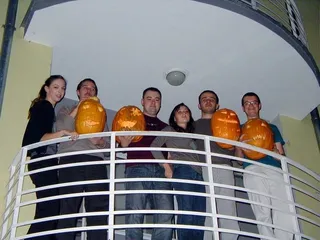There is always period between installing your favorite OS into virtual machine and installing integration component when mouse cannot be shared between host and virtual machine. Once you click on virtual machine, all your mouse moves are interpreted as virtual mouse moves.
To regain control you need to press some magic key-combo. On newest Virtual PC (beta) that combination is Ctrl+Alt+Left. This is quite a different than what Virtual PC/Server used before (Ctrl+AltGr) but Hyper-V users will find them self at home since same combination is used there.
Other useful combination to remember is Ctrl+Alt+End which simulates good old Ctrl+Alt+Del. In order to switch between normal and full screen, use Ctrl+Alt+Pause.
I will also mention few mappings that will probably cause quite a trouble with old games:
Alt+Home => Ctrl+Esc
Alt+Insert => Alt+Esc
Alt+PgUp => Alt+Tab
Alt+PgDn => Alt+Shift+Tab
I found no way to turn them off.

